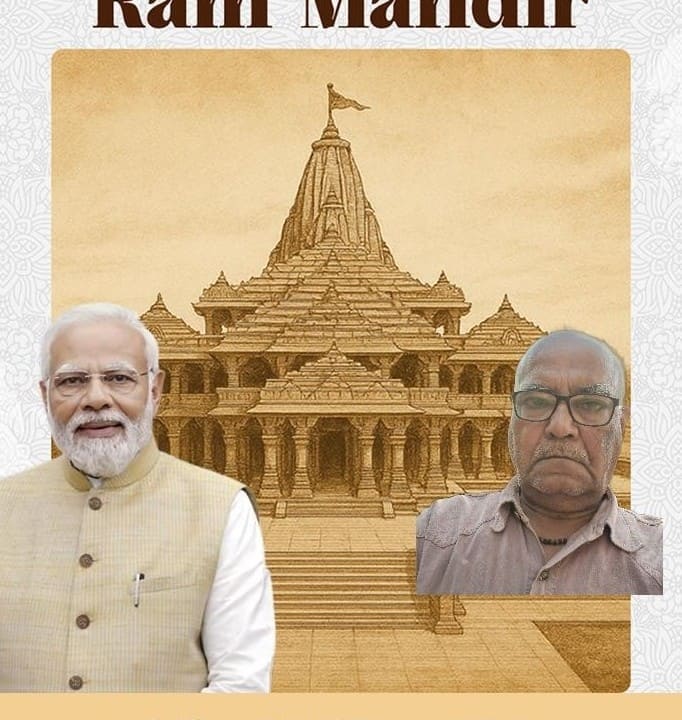India boasts a rich cultural heritage, an eternal journey through time, topography, and generations defined by diversity in terms of languages, art forms, traditions, and practices. The Modi government has brought much-needed change in the cultural sphere, bringing different communities together and imbibing a sense of patriotism in today's youth and old alike. There has been an unprecedented push towards the revival of long-forgotten traditions, neglected cultural values, and the restoration of monuments, which bears testimony to the significant landmark achievements of the current government under the leadership of Prime Minister Narendra Modi.
From preserving and promoting our glorious history in the form of temples to making museums as centres for experiential learning and digitising manuscripts and museums, the government under PM Modi has introduced several initiatives to maintain and preserve our cultural assets in the last ten years. To transform India into a world-class destination for spiritual tourism, the government under Prime Minister Narendra Modi has undertaken several redevelopment and infrastructural projects.
With the inauguration of Ram Mandir in Ayodhya in January 2024, a journey that began several centuries ago reached culmination. The inauguration of Ram Mandir in Ayodhya serves as a significant moment for millions of Hindus nationally and globally. In addition to its spiritual importance, the temple signifies the true devotion and sacrifices of thousands of citizens who tirelessly worked towards turning this dream into a reality. PM Modi’s emotional speech on the day of the temple’s inauguration bears the testimony to this fact when he said – “Ram is the faith of Bharat; Ram is the foundation of Bharat. Ram is the thought of Bharat; Ram is the constitution of Bharat. Ram is the consciousness of Bharat; Ram is the contemplation of Bharat. Ram is the pride of Bharat; Ram is the glory of Bharat. Ram is a continuous flow; Ram is an influence. Ram is an idea; Ram is also a policy. Ram is eternal, Ram is perpetual. Ram is pervasive, Ram is universal. Ram is the soul of the world. And therefore, when the consecration of Ram takes place, its impact is not just for years or centuries; its impact lasts for thousands of years.” These words of PM Modi were enough to bring goosebumps to every man who was listening to him live and online.
Some other prominent examples include revival of Kashi Vishwanath Dham, redevelopment of Kedarnath Dham, connecting Uttarakhand's Char Dham pilgrimage sites with all-weather roads, iconic Revival of Shri Ujjain Mahakal Temple Corridor and Facelift, cleaning and upkeep of several Ghats in Ganga under the Namami Gange Mission.
Because of PM Modi's perseverance and vision to progressively grow the religious tourism sector, India is seeing positive developments across the sector and the nation. There have been innumerable projects which have been revamped or redeveloped over a decade. Be it the laying of the foundation stone in Ayodhya in August 2020 or the inauguration of the transformed Mahakaleshwar Jyotirling Temple in Ujjain, PM Modi has always managed to link the people of the nation with the faith along with preserving the sanctity of the traditions and the nation's civilisational values.
Along with the redevelopment of Kedarnath, the Modi government took the initiative of linking the four sites of Yamunotri, Gangotri, Kedarnath and Badrinath through the Char Dham Pariyojana under which the construction of all-weather roads connecting the four pilgrimage sites have been taken up. In another project, the government planned to link Rishikesh with Karnaprayag via a railway line, which will likely be operational by 2025.
In 2017, PM Modi unveiled the 112-feet-tall lord Adiyogi Shiva statue in Coimbatore and brought yoga to the fore, bringing together the nation's citizens to build a better and spiritually healthy Bharat. In 2021, a revamped Kashi Vishwanath Dham in Varanasi was inaugurated by Narendra Modi. PM Modi also inaugurated the Somnath seaside promenade, and his government led the initiative to reconstruct the temple precinct of Old (Juna) Somnath. After the annulment of Article 370, the government under PM Modi launched renovation works at several temple complexes in the Valley, including Srinagar.
Through the Char Dham project, the government aims to provide all-weather connectivity to four holy towns in the state — Yamunotri, Gangotri, Kedarnath and Badrinath. The project includes 825 km of national highways connecting Uttarakhand state. By September 2023, of the 825 kilometres, about 601 km will have been completed. The project, costing over Rs 11,700 crore, which was initially expected to be completed by March 2020, is now scheduled to be completed by December 2024.
The year 2022 saw many landmark achievements in the cultural sphere. The unveiling of the 216-feet-tall Statue of Equality in Hyderabad commemorating the 11th-century Bhakti Saint Ramanujacharya and PM Modi's visit to Pavagadh Hill in Gujarat, along with laying the foundation stone of a redeveloped temple of the Kalika Mata. Recently, in 2024, another project has been launched by PM Modi, Kamakhya Divyalok Pariyojana, a project aimed at boosting tourism in Assam.
Prime Minister Narendra Modi has also initiated the establishment of temples abroad, not just in Bharat alone. In 2018, he unveiled the inaugural Hindu temple in Abu Dhabi. A year later, he initiated the revitalisation project for the 200-year-old Lord Sri Krishna Shreenathji temple in Bahrain. In 2024, Prime Minister Modi inaugurated the Swaminarayan temple of the Bochasanwasi Shri Akshar Purushottam Swaminarayan Sanstha, a Hindu temple in Abu Dhabi, a magnificent temple which looks splendid with its architecture adorned with pink sandstone.
Prime Minister Narendra Modi's landmark initiatives, which range from promoting Indian traditions to reviving India's cultural heritage, have not only changed the socio-economic landscape of the nation but also earned the nation due respect and accolades from world institutions and leaders. PM Modi's goal for cultural preservation and revival has been a source of inspiration for one and all. It has been proven to be a catalyst for bringing people from diverse backgrounds together, bridging boundaries, encompassing terrains and enhancing the world's cultural environment.






















